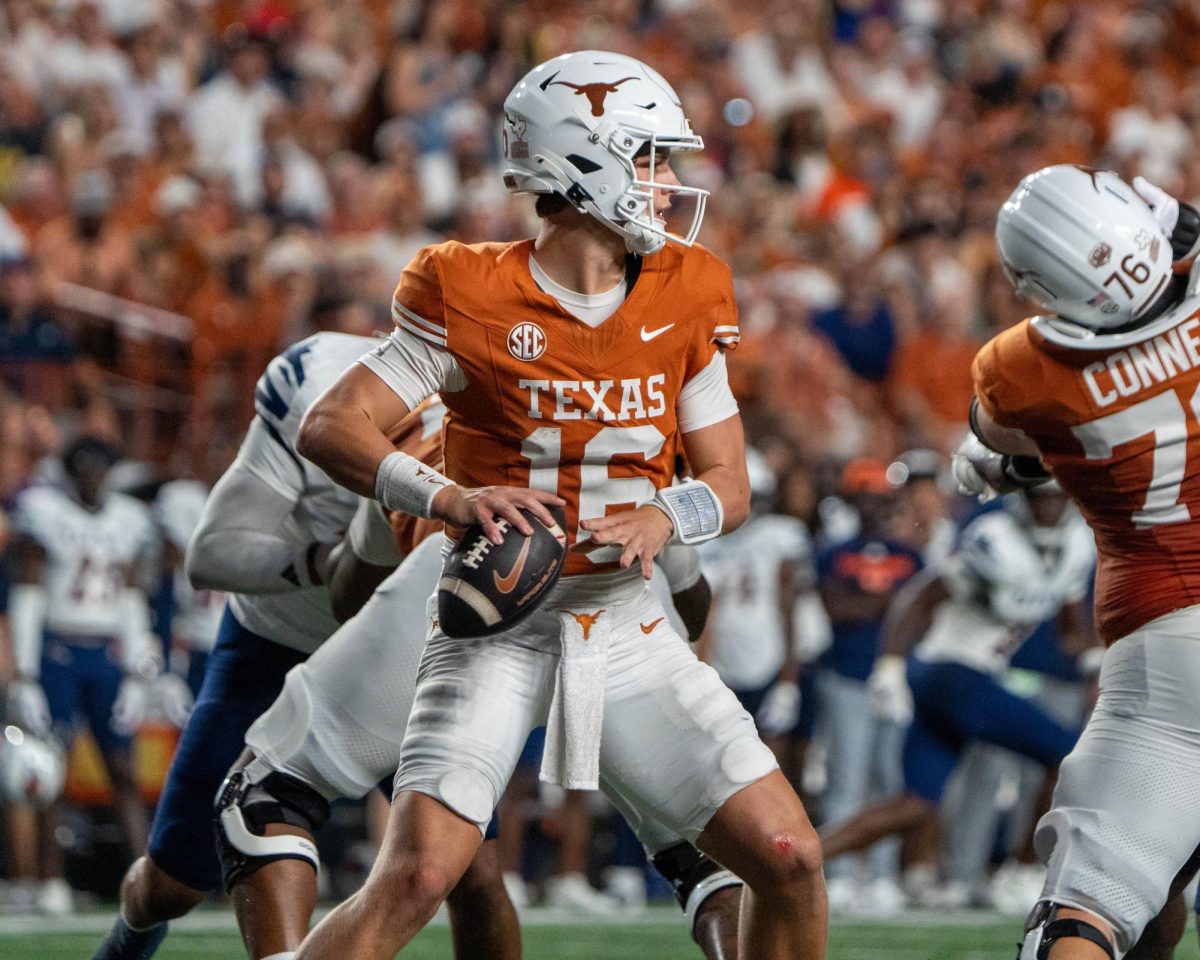The chaotic nature of college football brings an avalanche of clichés every season. But, in this case, it applies: Texas is at a “make-or-break” point in its season.
Every season has its own defining point where a team’s fate is sealed. Think Texas’ soul-crushing loss at Texas Tech in 2008 or any time the 2005 Longhorns stepped onto the field. For this year’s Longhorns, that defining point is approaching.
After dropping their second loss of the season in Stillwater, the Longhorns have almost lost all hopes of a playoff berth. Yet, there is still more to be decided in the coming weeks. An incredibly tight Big 12 Conference race and the annual mayhem provided by the month of November leaves Texas with opportunity.
The numbers don’t favor Texas. And that’s been the case for a lot of the numbers detailing Texas’ success, despite an impressive six wins and a top twenty AP ranking. From an analytics standpoint, advanced statistics have been projecting the Longhorns slipup since the start of their steady rise.
College football’s best predictive advanced statistic, S&P+, measures team efficiency in key aspects of the game to compare and evaluate them with opponent-adjusted statistics. Created by Bill Connelly, SB Nation’s college football editor, the S&P+ statistics are often regarded as a holy grail of information for the game, effectively sorting out as much chance as possible and hitting on predictions close to the rate of Vegas. It’s also been right on all but two of Texas’ predictions so far.
Measuring the “factors of winning football” — efficiency, explosiveness, turnovers, field position and finishing drives — Texas’ season output and S&P rank thus far isn’t much to be proud of: 42nd in the nation. And, as if the ranking wasn’t concerning enough, the data puts Texas behind every other team in the conference except Kansas, Kansas State, Baylor and TCU. Not ideal for Longhorn fans.
As for the remaining regular season, projections are still bleak. Texas’ next two weeks are tough: a home showdown against West Virginia followed by a trip to Lubbock to face Texas Tech. The Longhorns’ projected win probabilities for those games currently sit at 41 percent and 40 percent, respectively.
The next two weeks are very important for the Longhorns. November is where winners are made as the Big 12 Conference standings will shift and bring separation between contenders. With the possibility of finishing with a record anywhere between 10–2 and 6–6, these two weeks will likely determine if the season has been a convincing leap from the mediocrity of past seasons.
The problem hasn’t been how the Longhorns have performed against top-tier teams; it’s how they have performed against far worse teams that brings some concern, as Connelly pointed out.
Before last week’s loss at Oklahoma State, a top 50 team, the Longhorns had outscored top 50 teams by an average of 13.7 points — a statistic that would make anyone ready to claim that Texas is back. However, Texas’ success against bottom 80 teams has been far less pretty, owning an average scoring margin of just plus-3.5, per SB Nation.
Of course, the Longhorns, and not the numbers, will be the ones putting the finishing touches on their 2018 season. With Texas already logging six wins this season, fans will turn their focus to potential bowl game selections. The Longhorns will have to play three more top 50 teams out of their four remaining games, and consecutive losses could be the difference between packing for San Antonio and the Alamo Bowl or a potential New Year’s Six bowl bid.
Despite the tough odds, it’s possible Texas head coach Tom Herman’s success as an underdog could lead to the unlikely. Often described as “a game decided by inches,” there are immeasurable moments in football, occurring in just seconds, that affect outcomes. It would be reckless to ignore the data suggesting that Texas has looked far from outstanding, yet it still won’t write the whole story. It just gives us a better idea.
The numbers may bet against Texas, but with the turnaround it’s had this season, I probably wouldn’t be able to.





















